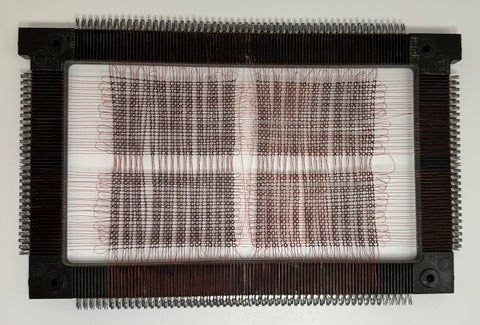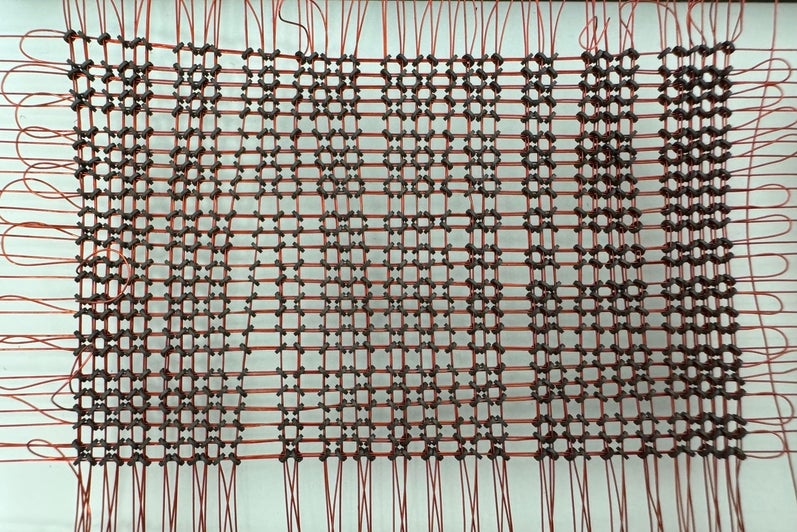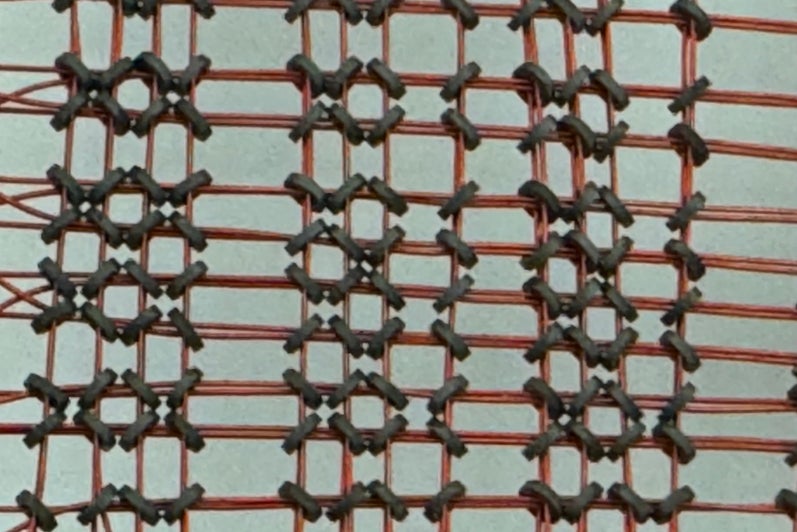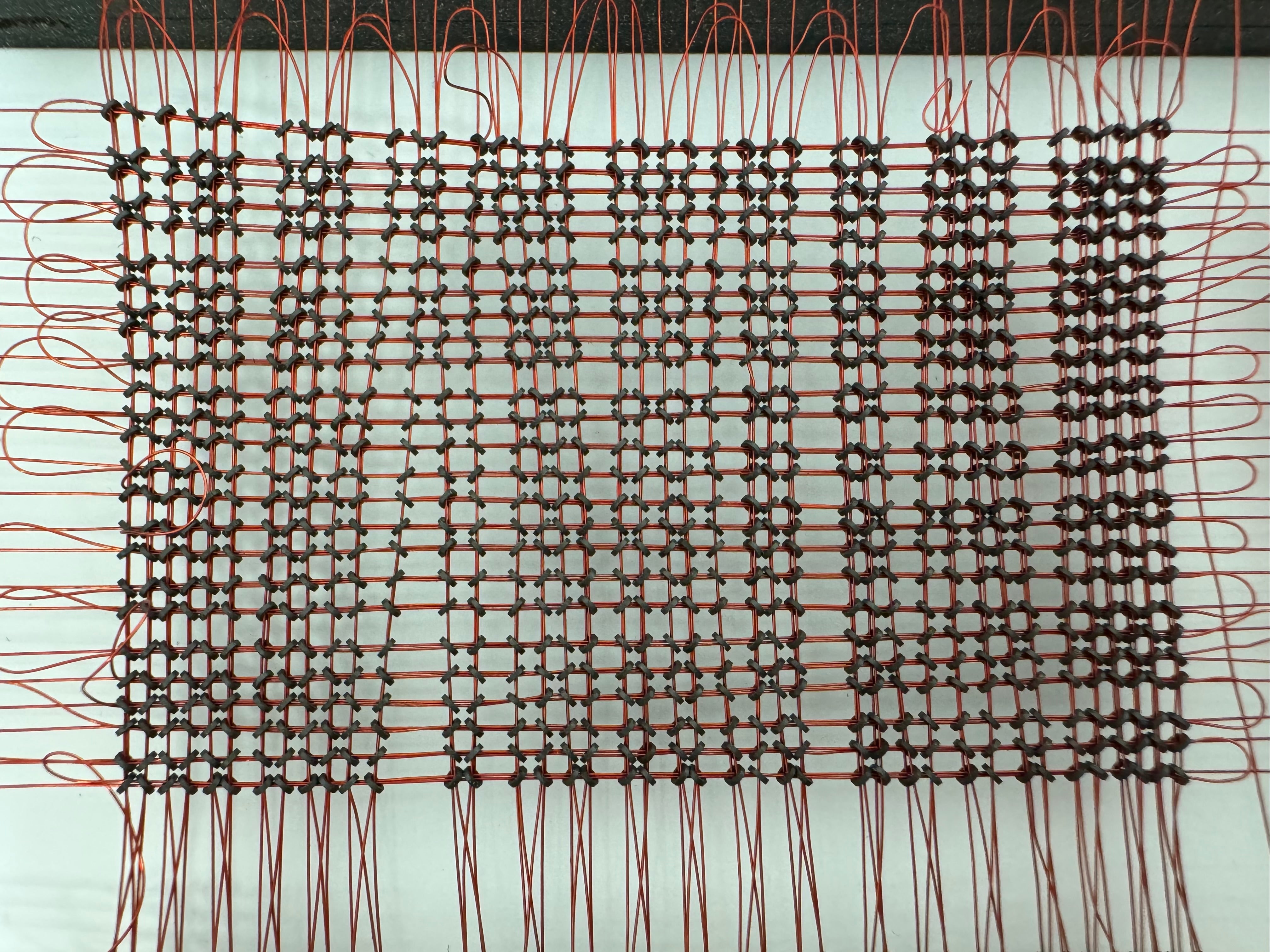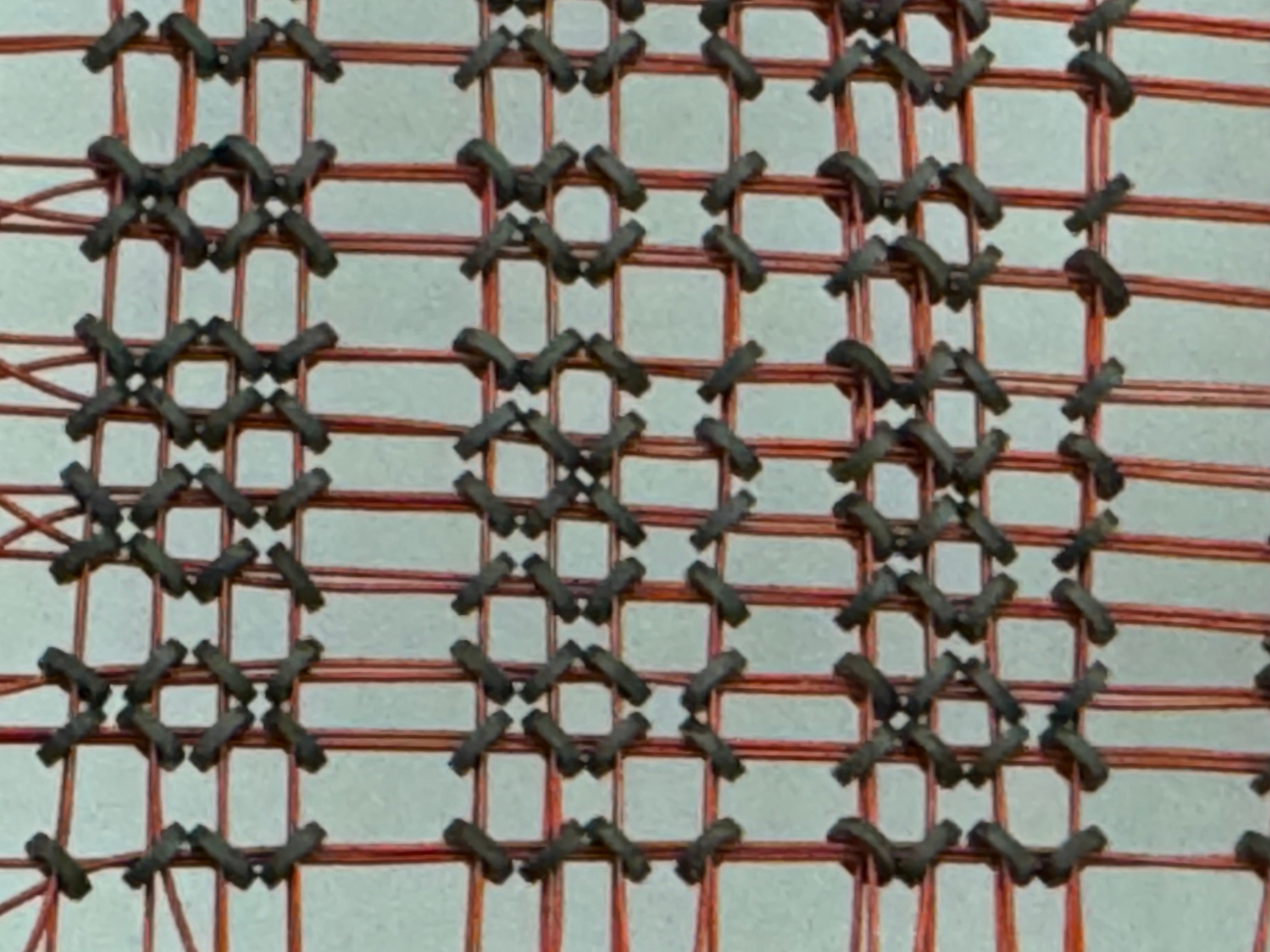Featured items: IBM 1620 Core Memory Board (or is it??)
Core memory
The artifact pictured is a core memory board that we believe is from Waterloo’s very own IBM 1620. A memory board works by threading small rings, called toroids, together to form cores. Each core holds one bit of data, and the core pictured is 50x80, indicating that it holds 4000 bits of data. To store data, each core is magnetized in either a clockwise or counterclockwise direction, which the IBM 1620 reads as binary. When not being used the core stores the last value assigned, allowing the data to be kept without constant power use.
This artifact was donated to us by Professor Peter Buhr.
The IBM 1620 at UW
The IBM 1620 was marketed as an inexpensive scientific computer in 1959. On April 17, 1961, the IBM 1620 arrived at Waterloo. The university rented the computer in monthly installments of $672.00, and finally purchased it in 1963. The 1620 was available between 9am-11pm and was widely used by all students on campus.
Did we get it wrong??
One of our readers pointed out the following:
"Actually, the memory board shown on these pages is not from an IBM 1620. The main memory in the IBM 1620 had core planes with 10,000 cores arranged in a 100x100 grid. As mentioned in the description, the board shown has 4000 cores arranged in a 50x80 grid, therefore not from a 1620. (To be complete, the 1620 also had boards with 16x24 cores and with 10x10 cores. Obviously the board shown is neither of those.)
So what is your board? I can't see anything in the picture that says IBM, but assuming it is an IBM core memory board, I would hazard a guess that it is a main memory board from an IBM 1401 computer. The 1401 used core memory boards of the exact size shown: 50x80. While it's always possible that boards of this size were used in other equipment as well, the 1401 seems the most likely source for a board of this size.
I hope this information aids in correctly identifying the artifact shown. I was an avid user of both the 1620 and the 1710 at the University of Waterloo between 1970 and 1975."
As the saying goes "further research is required"!
Pictures of individual cores
Related links
About the author
Charlotte Wipp is a Physics and Astronomy student currently in her 2B term at Waterloo. She enjoys tinkering and creating all forms of art in her free time. She works at the Computer Museum as their current Winter 2024 coop student.
